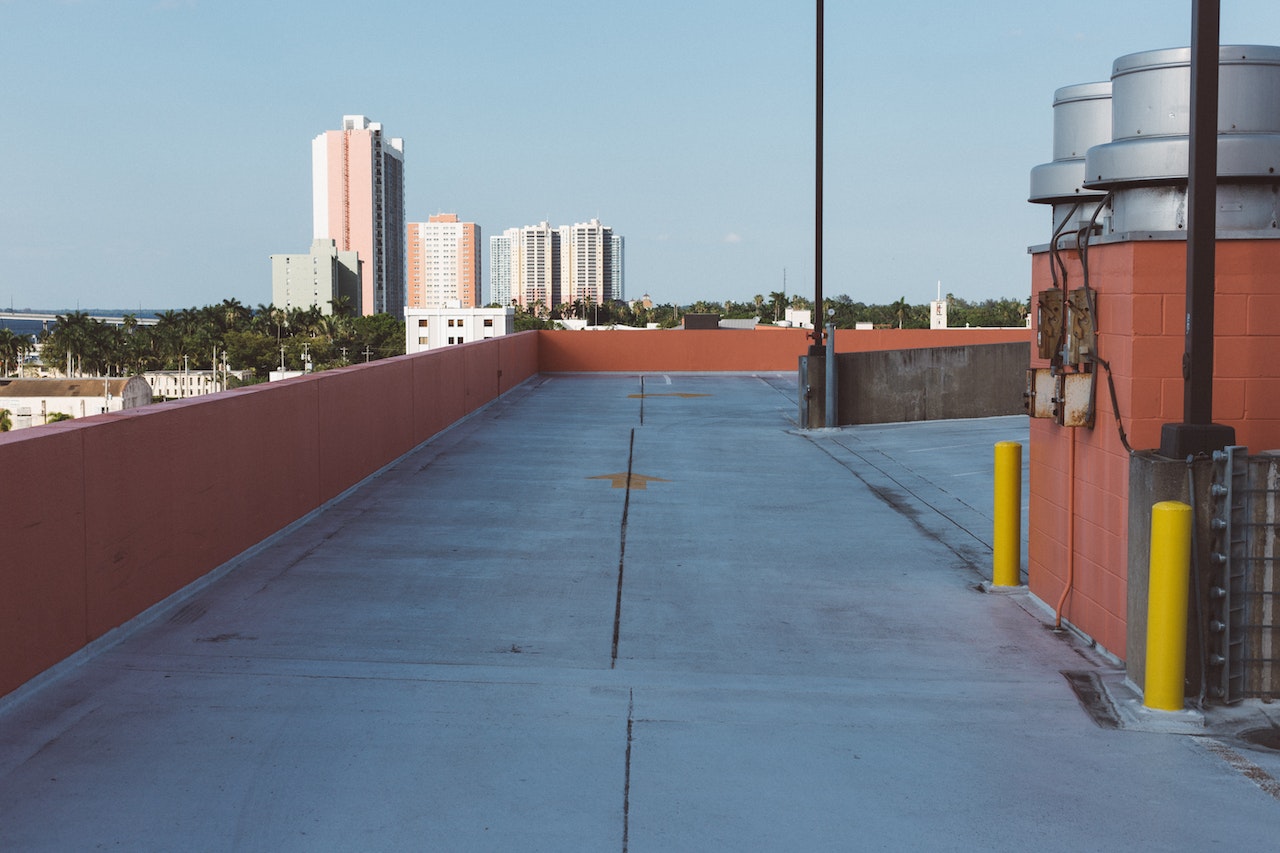Flat roofing is a commonly used technique in the construction industry that offers a range of benefits and considerations.
With its sleek and horizontal design, flat roofing has become famous for commercial and residential buildings. However, what exactly is flat roofing? How does it differ from other types of roofing?
In this discussion, as reputable roofers will explain the various kinds of flat roofing, their unique characteristics, advantages, and potential drawbacks. By the end, you will better understand whether flat roofing is the right choice for your upcoming project.
Types of Flat Roofing
Various types of flat roofing systems are available, each with its advantages and considerations.
Two common flat roofing systems are built-up roofing and modified bitumen roofing. Built-up roofing, or BUR, is a traditional and reliable option.
It is comprised of multiple layers of roofing felt interspersed with layers of bitumen. The layers are subsequently covered with gravel or a reflective coating.
Built-Up Roofing (BUR) excels in providing outstanding waterproofing and durability, rendering it highly suitable for commercial and industrial buildings.
On the other hand, modified bitumen roofing is a more modern option. It is made from asphalt and rubber modifiers that improve its flexibility and strength. It is often installed in multiple layers and can be heat-welded for added stability.
Modified bitumen roofing offers good resistance to weathering and is easy to maintain.
Both built-up roofing and modified bitumen roofing present viable choices for flat roofs, with the decision influenced by factors such as budget, climate, and specific project requirements.
Characteristics of Flat Roofing
Flat roofing is characterized by specific features that make it suitable for certain types of buildings and climates.
One of the critical characteristics of flat roofing is its durability. Flat roofs are designed to withstand heavy loads and high winds, making them ideal for commercial buildings and areas prone to extreme weather conditions.
Additionally, flat roofs are easier to maintain compared to sloped roofs. Routine inspections and maintenance are essential to guarantee the longevity of flat roofing systems. This includes identifying and repairing any leaks or damages promptly.
Moreover, flat roofs offer a versatile space that can be utilized for various purposes, including rooftop gardens or the installation of solar panels.
In general, the combination of durability and low maintenance needs makes flat roofing a practical choice for numerous building owners.
Advantages of Flat Roofing
A key advantage of flat roofing lies in its versatility and adaptability to various building needs and purposes.
One of the most significant advantages of flat roofing is that it provides a cost-effective option for construction and maintenance. The simple design and ease of installation make flat roofs cheaper than sloped roofs.
Additionally, the flat surface allows for easy access and maintenance, reducing the overall cost of repairs and inspections.
Another advantage of flat roofing is its energy-efficient design. The flat surface facilitates the installation of solar panels, enabling the generation of renewable energy and a reduction in electricity costs.
Additionally, flat roofs have the capacity to integrate reflective materials into their design, alleviating heat absorption and diminishing the dependence on air conditioning, ultimately resulting in decreased energy consumption.
Overall, the cost-effectiveness and energy efficiency of flat roofing make it a desirable choice for many building projects.
Potential Drawbacks of Flat Roofing
A potential downside of flat roofing is the heightened risk of water pooling and leakage, attributed to the absence of a slope.
Unlike sloped roofs, flat roofs have a minimal gradient or none, which can lead to water accumulation. Without proper drainage, water can collect on the roof surface, causing it to deteriorate over time.
To mitigate this issue, flat roofs must be designed and installed with effective drainage systems, such as gutters and downspouts.
Additionally, regular maintenance is crucial to prevent water damage and ensure the roof’s longevity.
Flat roofs typically require more frequent inspections and cleaning to remove debris and prevent clogs that could impede water flow.
Despite proper maintenance, flat roofs’ lifespan expectancy is generally shorter than sloped roofs due to increased exposure to the elements and potential water-related issues.
Is Flat Roofing Right for You?
With the potential drawbacks of water pooling and leakage addressed, the question for roofing arises: is flat roofing the right choice for your project? To help you make an informed decision, here are the pros and cons of flat roofing, along with a cost comparison:
- Pros of Flat Roofing:
– Easy installation and accessibility for maintenance.
– Provides additional usable space for rooftop gardens or solar panels.
– Less expensive than pitched roofs in terms of initial installation costs.
– Aesthetically pleasing and modern design appeal.
- Cons of Flat Roofing:
– Requires regular maintenance to prevent water pooling and leakage.
– Limited slope can lead to decreased water drainage.
– Lifespan is generally shorter compared to pitched roofs.
– Additional insulation may be required to ensure energy efficiency.
Cost Comparison:
– Flat roofs tend to have lower initial installation costs than pitched roofs.
– However, long-term maintenance costs may be higher due to the need for regular inspections and repairs.
Considering these factors, it is essential to weigh the pros and cons and factor in your specific project requirements and budget before deciding if flat roofing is the right choice for you.
